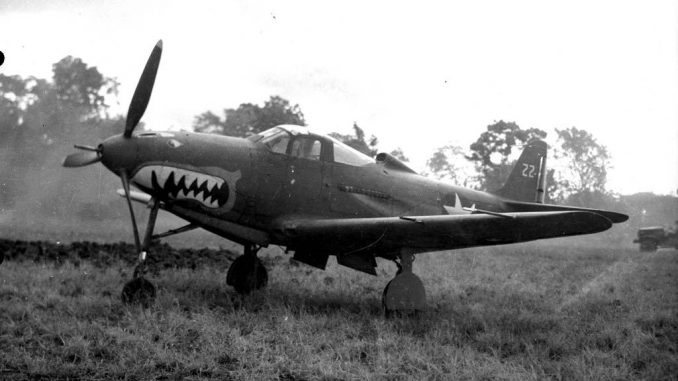
The Bell P-39 was designed in 1937 in response to a USAAC requirement for a new fighter that could match the performance of European models that were then in development – particularly the Supermarine Spitfire and Messerschmitt Bf 109. The Bell design team decided to mount the P-39’s engine behind the pilot, attached to the propeller by a long shaft, which promised to allow greater manoeuvrability and would allow for the installation of a large 25mm cannon in the nose. The Army was also impressed by the promised 400mph top speed.
The P-39 Airacobra, as it was named, was fatally compromised by the Army’s decision not to fit production models of the fighter with a turbosupercharger – the theory being that no bomber could reach the United States, and therefore a high-altitude interceptor was unnecessary. The addition of heavier armament (a 37mm cannon replaced the 25mm of the prototype) meant that performance suffered further, although at low altitude it could still attain over 350mph. Climb rate was decidedly inferior to likely enemy fighters. The P-39 was also the first American fighter to feature tricycle landing gear.
A British order for 675 P-39s was partially filled in late 1941, but it was discovered that the aircraft had a number of severe flaws and the type was withdrawn from combat after just a few missions. Most of the order was subsequently diverted to Russia, but a number where requisitioned by the USAAF and pressed into service as the ‘P-400’. Many of these aircraft were rushed to the South Pacific following Pearl Harbor, there being few other fighters available. The 67th Fighter Squadron, part of the ‘Cactus Air Force’, notably flew their P-400s from Henderson Field on Guadalcanal in 1942.
P-39s, along with P-40s, formed the backbone of the 5th Air Force fighter groups in New Guinea during the first 18 months of the war. They were sadly outclassed by the Japanese Zero and many were lost, unable to compete in air combat with the Mitsubishi type, apart from the few occasions when they were able to bring their heavy armament to bear. Nor was the P-39 very capable as an interceptor, proving unable to reach high-flying bomber formations. One group of P-39s was assigned to the 11th Air Force in the Aleutians where it faced much less capable opposition.
As soon as superior aircraft became available in numbers, the P-39 was soon withdrawn from combat. In the Pacific P-38 Lightnings and P-47 Thunderbolts were much preferred. However, the Soviet Union made good use of Lend-Lease Airacobras, receiving many thousands of them as well as being the sole significant user of the much-improved P-63 Kingcobra.

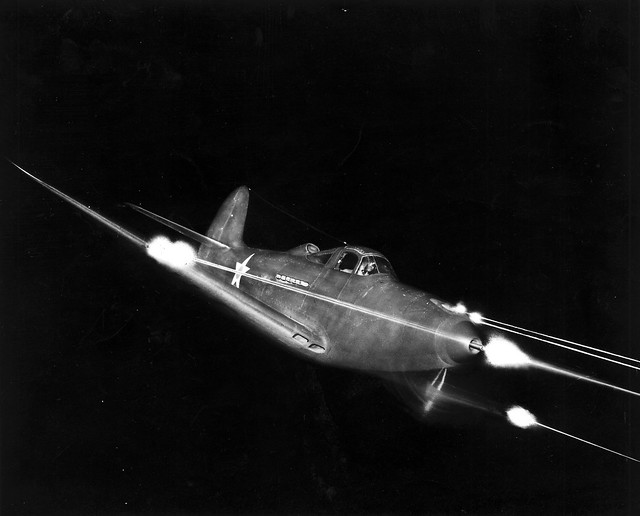
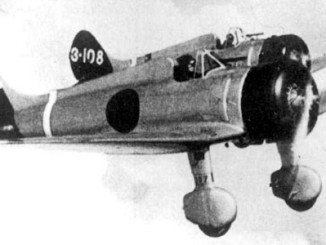
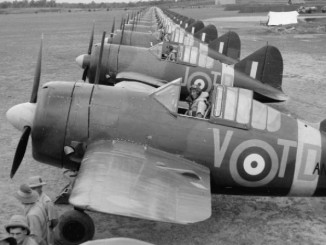
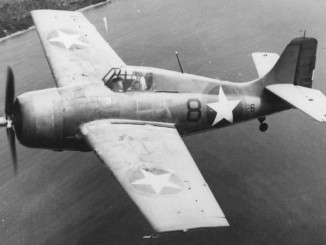
The Western Allies failed to see what the Soviets saw in the Cobra.
In Soviet hands it more than matched the Bf 109 at low altitude. This is where the air battle was centered on the Russian front. Most top 10 Allied aces flew the Cobra! Of course they may have cheated by stripping excess weight, like wing-guns.
And maybe they replaced mediocre US guns with the superior Russian equivalents when they ‘wore out’. This gave far better firepower.
Officially, the Soviets were to use the new P-63 King Cobras only against Japan.
But unofficially, many Luftwaffe pilots saw them in use covertly shooting them down. The antenna ring was one giveaway that it was no P-39. Of course, on paper the Soviets would always record it as a P-39. But don’t tell anybody P-63s were used in combat on both fronts. But Russian aces with pull, got their way it seems.
Bell fighters were popular in Russia, even into the Korean war.
They liked the heater and how it could force land in the snow with no ventral scoop in the way, with wheels up. It was sturdy and comfortable relative to what they were used to. Sure they had to deal with it’s vices, but the P-63 minimized them. Dogfighting a Bf 109 was far different than a Zero with the P-39. The Zero could not be shaken off and it’s guns could destroy the vulnerable engine in back. The Bf 109 could not out-turn the stripped P-39 so the tables were turned. The engine was relatively safe. The 109G with the 30mm hub cannon was much the same as the P-39 with the 37mm hub cannon. Both were unreliable and prone to jam. Both had very short range. But both were deadly if they hit anything in the air.
The P-400 was the worst because it had no supercharger like the rest of the Cobras, since it was the export model.
Climb to 20,000′ took 15 minutes! The XP-39 with turbo-supercharger took only 5 minutes.
It had a top speed of 398 mph at that altitude. Not bad pre-war. But the P-400 top speed was 355 mph and forget 20,000′. Of course the XP-39 had no guns as test flown. The idea of replacing the 37mm hub cannon with a 20mm Hispano was a good idea for the P-400, but it was the US M1 version which was much less reliable than the RAF Mk II 20mm cannon version.
Imagine if only the P-400 had the RAF 20mm cannon and the turbo-supercharger, it would have been perhaps the best Airacobra instead.
The Soviets used both the P-39 and P-400 like the US did but with far more success. Up to 10,000′-15,000′ was the typical combat altitude on the Russian Front. Fortunately the best level for the Cobra too.
They ran with full boost constantly. The life of the engine was less important than that of the pilot. Another thing, they often used their own 20mm cannons as replacements for the US cannons in the hub, and UBS HMGs in the cowl. Of course they also stripped their Cobras of excess weight like the wing guns, fuel, armor, and 2nd radio. Too bad it’s success is little known in the West. The top scoring US made fighter of WW2 was the Cobra with Russian pilots.
What was the firepower of the standard Cobra with US guns?
What was the firepower with Soviet guns?
P-39 with all 7 guns: 368 per sec. 6041 total ammo. 31 per kg.
P-400 with all 7 guns: 269 per sec. 3415 total ammo. 23 per kg
P-63A-9 all 5 guns: 475 per sec. 10,679 total ammo. 48 per kg.
P-39 nose guns: 326 per sec. 5411 total ammo. 35 per kg.
B-20+2UBS guns: 265 per sec. 4370 total ammo. 64 per kg.
VYa-23+2UBS guns: 381 per sec. 4601 total ammo. 42 per kg.
The last 3 are Cobras with no wing guns.
The most harmonized ballistics: VYa-23 cannon Cobra.
The most bang per gun weight: B-20 cannon Cobra.
The longest firing range: VYa-23 Cobra.
The most reliable guns: B-20 cannon Cobra. fail 1/3,000 rds.
Enter the Kobrushka! Turbo-supercharged, it added 10,000′ to the critical altitude. These foresook the 37mm cannon for the 20mm. The early models had Hispano M2 hub-cannons and twin M2 12.7mm cowl and wing-guns [inside for less drag, not under-wing]. Next came 20mm ShVAK or B-20 hub-cannons and twin 12.7mm UBS guns. Many with no wing-guns for VVS. It was a hit in spite of it’s 386 mph @ 21,000′ top speed. In the West this was too slow by mid-war. No Cobra and precious few if any VVS designs had a higher critical altitude, right up there with Antons and most Gustavs.
The last models had a bubble canopy and a trio of B-20 nose-cannons in VVS service.
Select US units added 12.7mm M2 or UBK guns.
These were parallel to the P-63s. Performance was like the prolific Bf 109G-6, or better.
Is That a square tip tail and an internally mounted .50 cal. wing-gun?
Photos of 20mm cannon armed Kobrushkas are rare, especially in a US unit.
Am I reading too much into the photo?